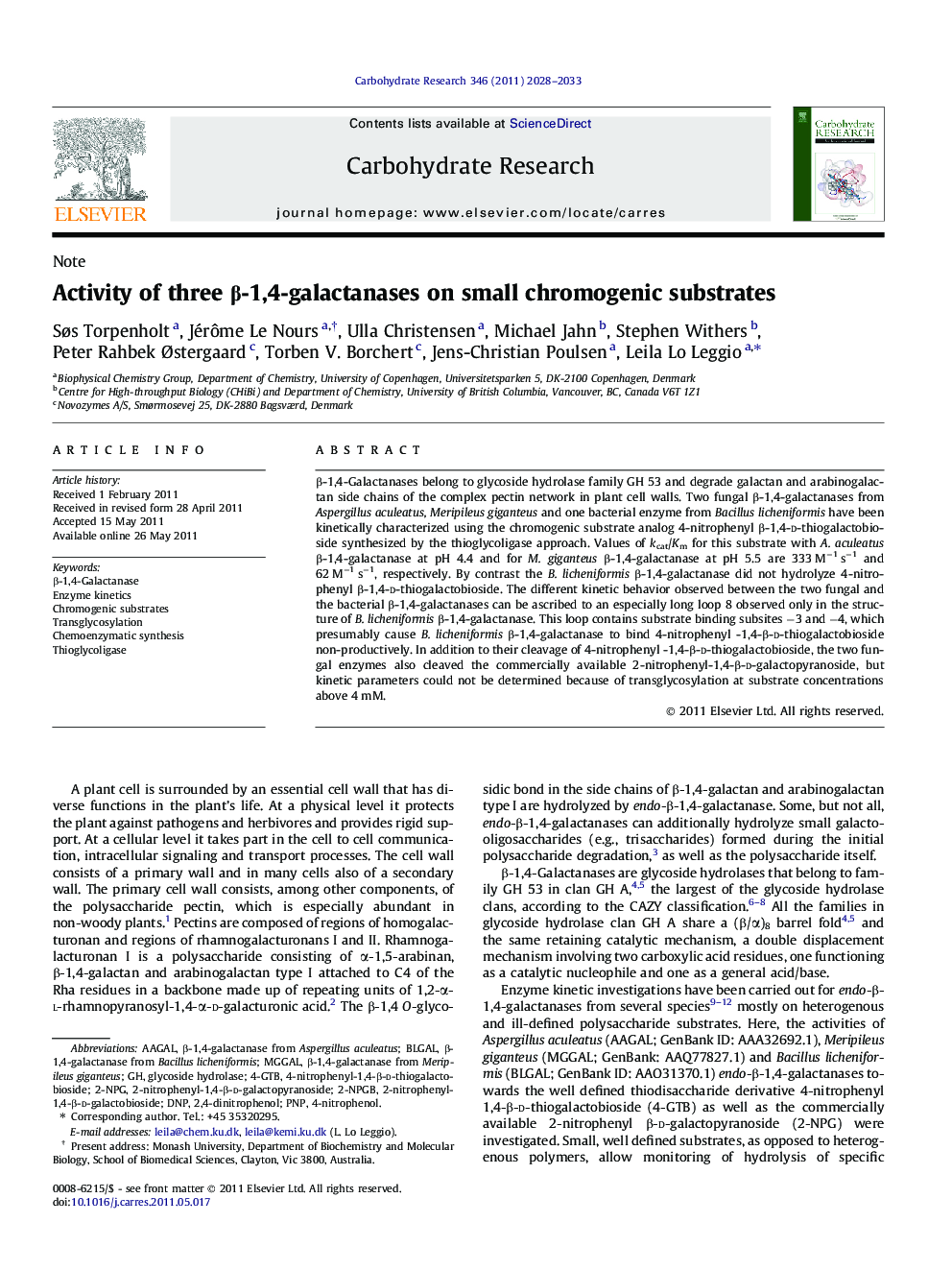| Article ID | Journal | Published Year | Pages | File Type |
|---|---|---|---|---|
| 10606614 | Carbohydrate Research | 2011 | 6 Pages |
Abstract
β-1,4-Galactanases belong to glycoside hydrolase family GH 53 and degrade galactan and arabinogalactan side chains of the complex pectin network in plant cell walls. Two fungal β-1,4-galactanases from Aspergillus aculeatus, Meripileus giganteus and one bacterial enzyme from Bacillus licheniformis have been kinetically characterized using the chromogenic substrate analog 4-nitrophenyl β-1,4-d-thiogalactobioside synthesized by the thioglycoligase approach. Values of kcat/Km for this substrate with A. aculeatus β-1,4-galactanase at pH 4.4 and for M. giganteus β-1,4-galactanase at pH 5.5 are 333 Mâ1 sâ1 and 62 Mâ1 sâ1, respectively. By contrast the B. licheniformis β-1,4-galactanase did not hydrolyze 4-nitrophenyl β-1,4-d-thiogalactobioside. The different kinetic behavior observed between the two fungal and the bacterial β-1,4-galactanases can be ascribed to an especially long loop 8 observed only in the structure of B. licheniformis β-1,4-galactanase. This loop contains substrate binding subsites â3 and â4, which presumably cause B. licheniformis β-1,4-galactanase to bind 4-nitrophenyl -1,4-β-d-thiogalactobioside non-productively. In addition to their cleavage of 4-nitrophenyl -1,4-β-d-thiogalactobioside, the two fungal enzymes also cleaved the commercially available 2-nitrophenyl-1,4-β-d-galactopyranoside, but kinetic parameters could not be determined because of transglycosylation at substrate concentrations above 4 mM.
Keywords
Related Topics
Physical Sciences and Engineering
Chemistry
Organic Chemistry
Authors
Søs Torpenholt, Jérôme Le Nours, Ulla Christensen, Michael Jahn, Stephen Withers, Peter Rahbek Ãstergaard, Torben V. Borchert, Jens-Christian Poulsen, Leila Lo Leggio,
